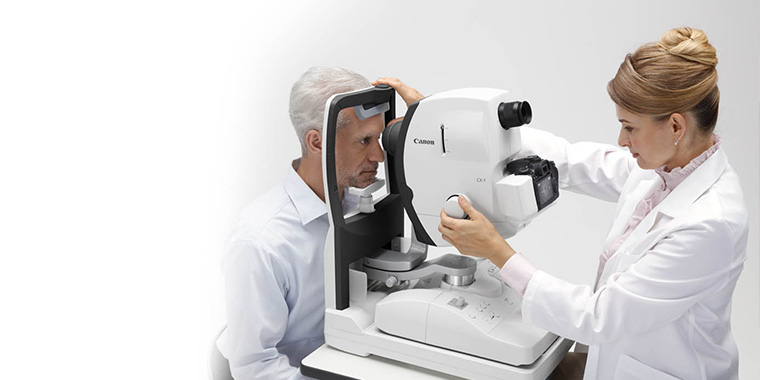Eye Facility in Andalusia: Advanced Vision Care Services Available
Eye Facility in Andalusia: Advanced Vision Care Services Available
Blog Article
The Advantages And Disadvantages of Different Refractive Surgical Procedures for Improved Eyecare

LASIK Surgical Treatment
LASIK surgical treatment is a frequently performed refractive procedure that aims to fix vision issues such as astigmatism, nearsightedness, and farsightedness. During the procedure, a slim flap is created on the cornea, and a laser is made use of to improve the underlying cells, fixing the refractive mistake.
One of the primary advantages of LASIK surgery is the quick renovation in vision experienced by lots of individuals. It is necessary for people considering LASIK surgical procedure to undertake a thorough assessment by an eye treatment specialist to establish if they are appropriate prospects for the treatment.
PRK Treatment
The PRK treatment, additionally known as Photorefractive Keratectomy, is a type of refractive surgery that aims to fix vision issues similar to LASIK surgical procedure. Unlike LASIK, which entails developing a flap in the cornea, PRK functions on the surface area layer of the cornea.
One of the advantages of PRK over LASIK is that it removes the risk of flap-related complications since no flap is developed during the surgery. Regardless of the longer healing period, PRK can be an ideal choice for individuals looking for vision adjustment surgical procedure.
SMILE Surgical Treatment
An innovative refractive surgery strategy acquiring appeal in the area of ophthalmology is SMILE Surgery. Tiny Cut Lenticule Removal (SMILE) is a minimally invasive treatment that deals with vision by reshaping the cornea using a femtosecond laser. Unlike typical LASIK surgery, SMILE Surgery includes creating a little incision in the cornea to draw out a lenticule, which causes less interruption to the corneal framework and potentially much faster recovery times.
Among the key advantages of SMILE Surgical treatment is its ability to treat nearsightedness (nearsightedness) and astigmatism with high precision, causing outstanding visual results for people. The minimally intrusive nature of the procedure likewise lowers the danger of issues such as completely dry eye syndrome, making it a favorable choice for people looking for refractive surgical procedure.

LASEK Technique
Having discovered the advantages and factors to consider of SMILE Surgery, one more noteworthy refractive surgical treatment strategy worth checking out is the LASEK Technique. LASEK, which stands for Laser-Assisted Subepithelial Keratectomy, is a form of laser eye surgery that aims to fix refractive errors such as myopia (nearsightedness), hyperopia (farsightedness), and astigmatism.
Unlike LASIK, LASEK does not entail developing a corneal flap. Rather, throughout a LASEK treatment, the surgeon uses a diluted alcohol service to loosen up the slim external layer of the cornea, called the epithelium. This layer is then delicately moved apart to permit the laser to improve the underlying corneal tissue. As soon as the cornea has been improved to the desired degree, the epithelial layer is repositioned.
Among the main benefits of LASEK is that it can be appropriate for individuals with slim corneas who browse this site might not be great candidates for LASIK. In addition, LASEK normally leads to marginal post-operative discomfort and a quicker recovery time contrasted to PRK. However, the aesthetic recovery procedure with LASEK may be a little longer than with LASIK.
Implantable Contact Lenses
Implantable Contact Lenses provide a long-term vision improvement service for people seeking an option to traditional get in touch with lenses or glasses. These lenses, additionally understood as phakic intraocular lenses, are operatively inserted right into the eye to correct refractive errors such as nearsightedness (nearsightedness), hyperopia (farsightedness), and astigmatism. eye center andalusia. Unlike traditional get in touch with lenses that rest on the surface of the eye, implantable get in touch with lenses function within the eye itself, giving clear vision without the requirement for everyday upkeep or removal
Among the key advantages of implantable contact lenses is their durability. Once put, they can stay in the eye indefinitely, Homepage using steady and consistent vision adjustment. Additionally, these lenses can be an outstanding alternative for individuals who are not good candidates for laser eye surgical procedure or that favor a relatively easy to fix vision improvement procedure.
However, implantable get in touch with lenses do carry some dangers, including the potential for cataracts or increased eye pressure. It is important for people considering this choice to seek advice from with an eye care professional to figure out if implantable get in touch with lenses are the appropriate selection for their specific demands and eye health.
Final Thought
Finally, each type of refractive surgery has its own benefits and downsides. LASIK surgery is preferred for its fast healing time, while PRK procedure might be suitable for patients with slim corneas. SMILE surgical procedure supplies minimal discomfort throughout the procedure, yet LASEK technique might have a longer healing procedure. Implantable get in touch with lenses supply a choice for those who are not appropriate candidates for traditional surgeries. Individuals need to seek advice from their eye care provider to determine the most effective alternative for their private needs.

Overall, SMILE Surgery presents an appealing option for individuals looking to boost their vision with refractive surgical treatment.
Report this page